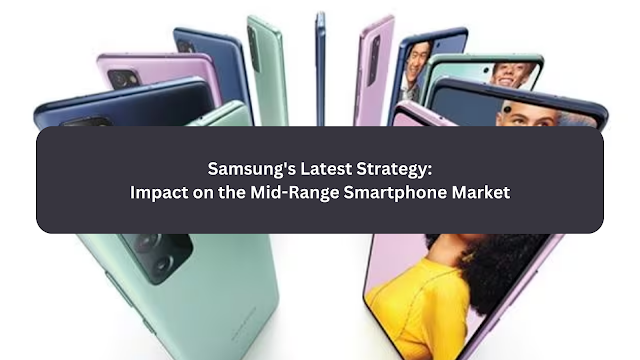Samsung's Latest Strategy: Impact on the Mid-Range Smartphone Market
In a recent announcement, Samsung introduced its latest additions to the Galaxy A series, the Galaxy A35 5G and A55 5G. However, what caught the attention of many was the surprising decision to release the cheaper A35 model in the US, leaving the A55 unavailable in this market. Let's explore the implications of this move and its potential impact on consumers and competitors alike.
The Shift in Samsung's Strategy
Traditionally, Samsung flooded the market with a plethora of Galaxy phones at various price points, allowing consumers to choose the best option suited to their needs. However, the exclusion of the Galaxy A55 from the US market marks a departure from this strategy. With the higher-end Galaxy S23 and S23 FE often available at competitive prices in the US, Samsung seems cautious about cannibalizing sales of these flagship models by introducing the A55.
Consequences for Consumers
While this decision may seem rational from a sales perspective, it limits options for consumers seeking a mid-range Android device in the $500 price range. The Galaxy A55 offered features such as a larger display, microSD card slot, bigger battery, and extended software support, appealing to users with specific preferences. With the A55 absent, consumers may find themselves considering alternatives like the OnePlus 12R, Moto Edge (2023), or the upcoming Google Pixel 8a.
Google's Opportunity: The Pixel 8a
The absence of the Galaxy A55 creates a void in the mid-range smartphone market, presenting an opportunity for competitors like Google to capitalize on. With the anticipated release of the Pixel 8a boasting enticing features such as an improved 120Hz display, DisplayPort output, and the Tensor G3 chip, Google stands poised to gain a larger market share. This strategic shift could potentially bolster Google's position in the smartphone market, especially in the US.
As consumers explore alternative options in the mid-range smartphone market, tools like Smart Transfer offer a seamless solution for transferring data between devices. This third-party Android file transfer app streamlines the migration process, ensuring a smooth transition for users switching between smartphones. With the evolving landscape of smartphone choices, apps like Smart Transfer play a crucial role in enhancing user experience and device migration.
The Impact on the Android Ecosystem
Samsung's decision to forego the Galaxy A55 in the US reflects a broader trend in the Android ecosystem, highlighting the challenges of competing in a market dominated by Apple. While Samsung's strategy may align with its business objectives, it raises concerns about the perception of Android devices in the US market. The shift towards cheaper alternatives like the Galaxy A35 may reinforce stereotypes of Android phones being less powerful, potentially impacting the platform as a whole.
Summing Up
Samsung's strategic shift with the Galaxy A series presents both opportunities and challenges for consumers and competitors alike. As the smartphone market continues to evolve, the choices made by industry leaders like Samsung and Google will shape the landscape of the Android ecosystem in the years to come.



Comments
Post a Comment